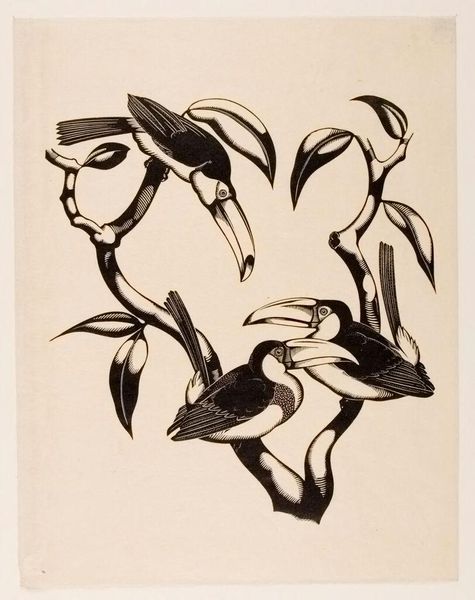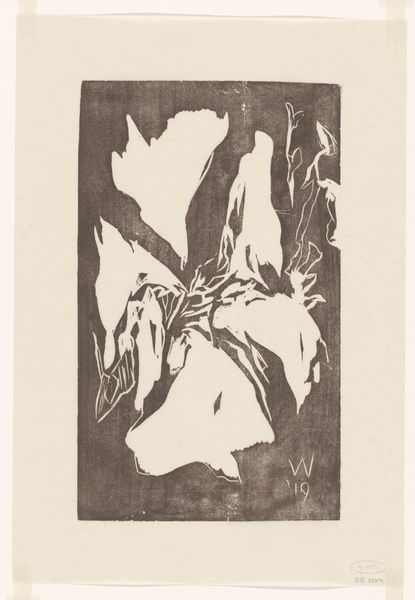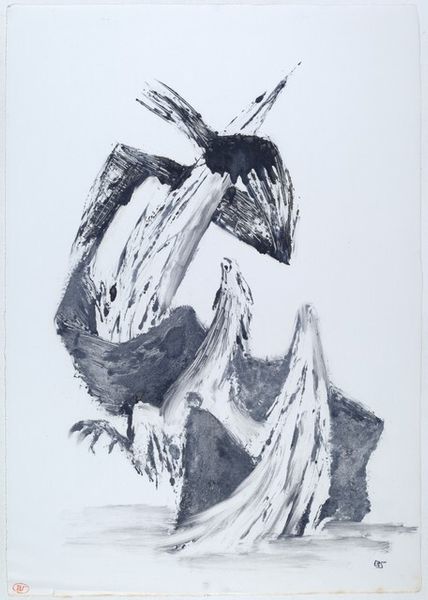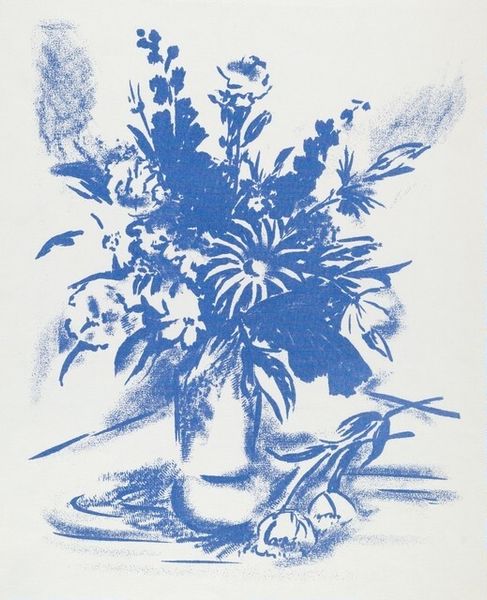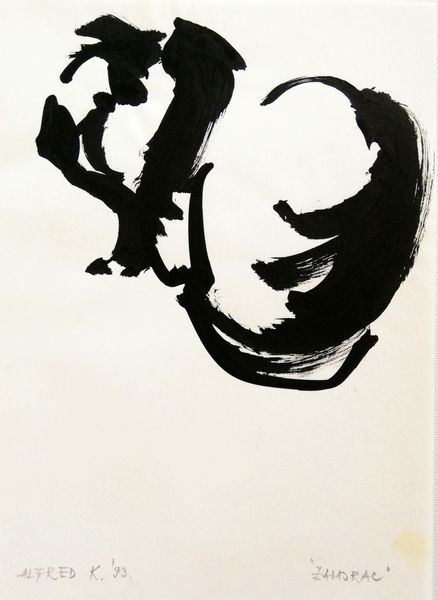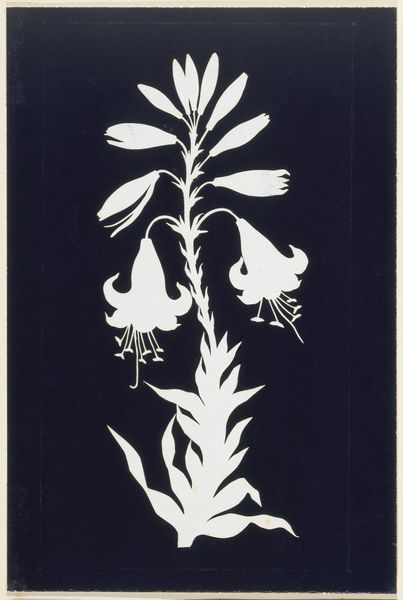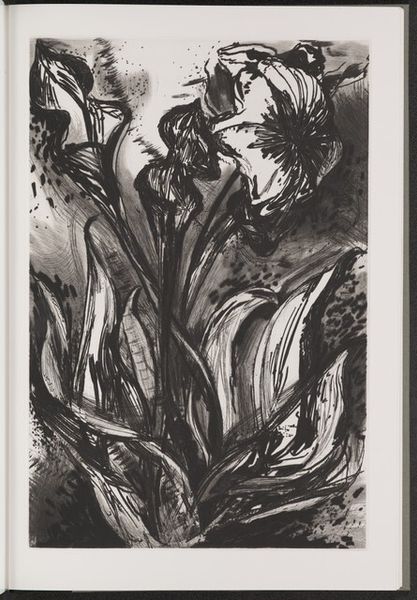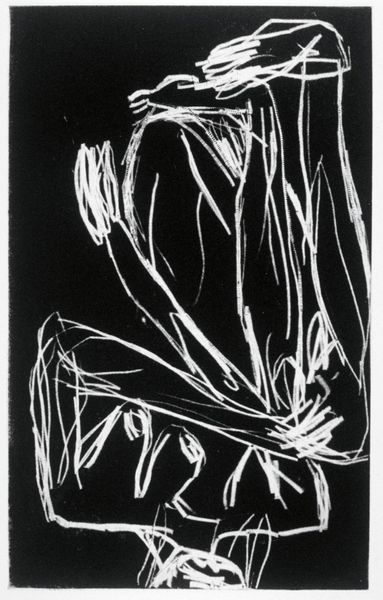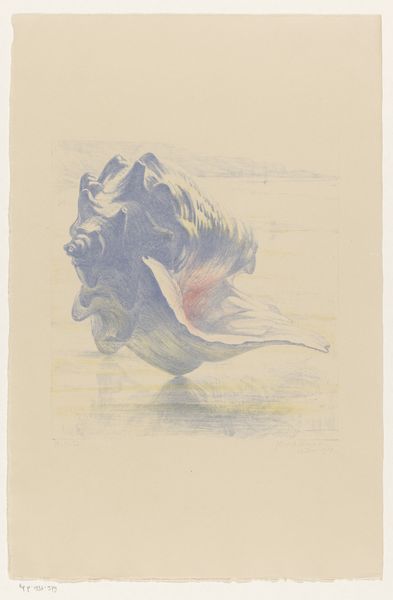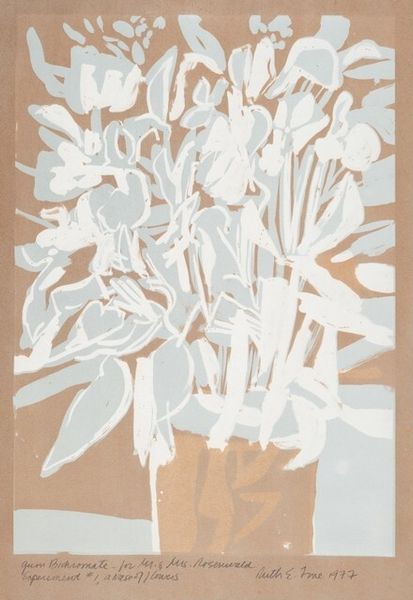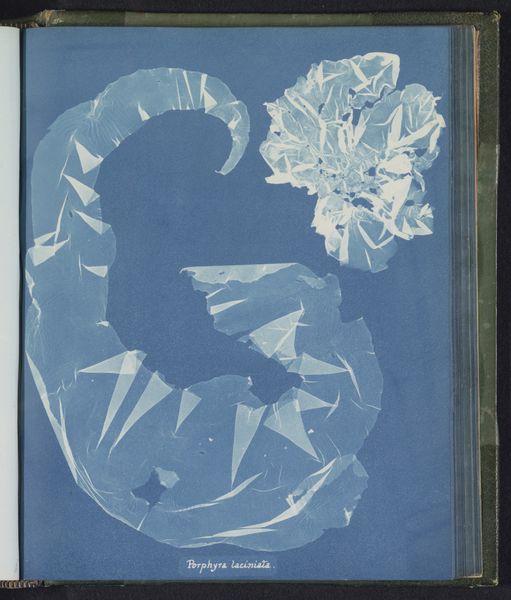
Copyright: Lourdes Castro,Fair Use
Editor: This is Lourdes Castro's "Echium Nervosum," made in 1972 using the cyanotype process. The deep blues of the botanical forms against the creamy background give it a striking graphic quality. How should we interpret this striking choice of medium? Curator: This cyanotype pushes against the conventional hierarchy of artistic materials. We often see photography categorized as a documentary tool or commercial practice. By using this process for botanical art, Castro elevates the craft of printing to a form of fine art while also highlighting the scientific nature inherent within this technique, blurring boundaries between artistic and laboratorial spaces. Editor: That's interesting, could the materials or process also make a statement? Curator: Precisely. Consider the social context. In 19th-century photography, cyanotype prints were cheap. Its use evokes notions of reproduction, dissemination of information and manual labor— processes that could relate to the colonial botany practices that were fashionable in the 1970s, with natural samples sent from newly discovered colonies across the world. Why make a unique artwork look as though it's mass-produced? Editor: So, it questions value and challenges traditional art hierarchies? I didn’t initially see it that way. Curator: Yes. The very materiality questions not only what constitutes art, but how it is produced, consumed, and what labor it reflects. Editor: This has given me so much to consider about the choice of technique and the art's meaning! Thank you. Curator: A fresh perspective reminds us that artworks always carry layers of meaning waiting to be uncovered.
Comments
No comments
Be the first to comment and join the conversation on the ultimate creative platform.
